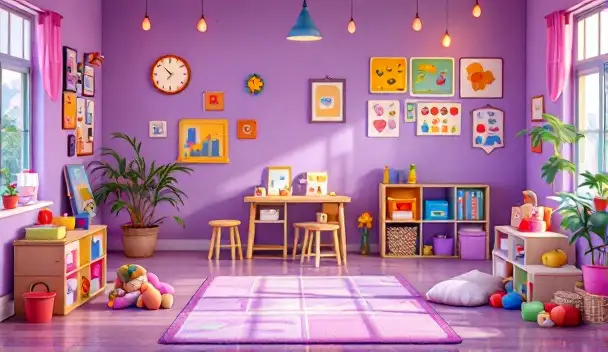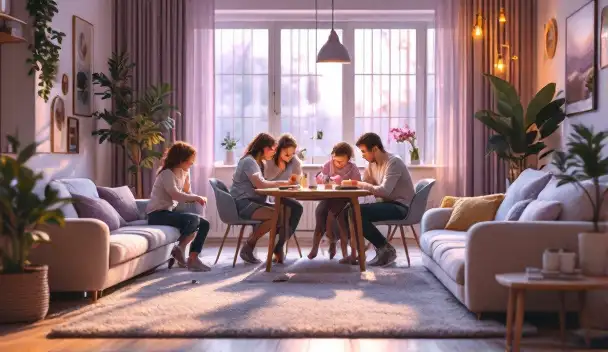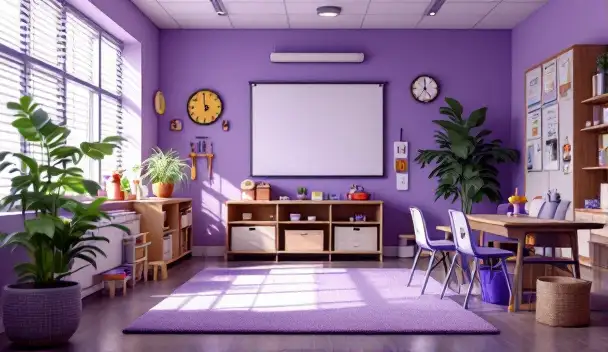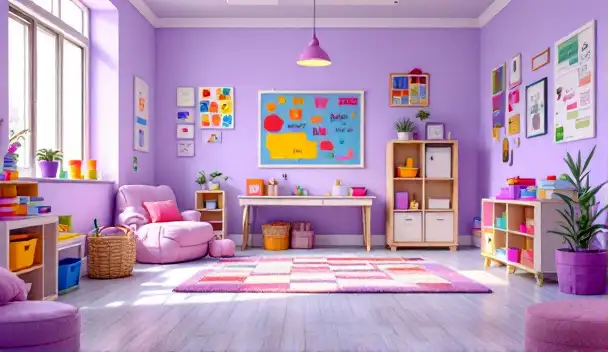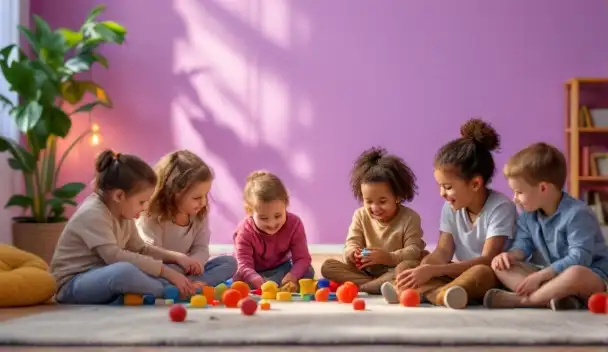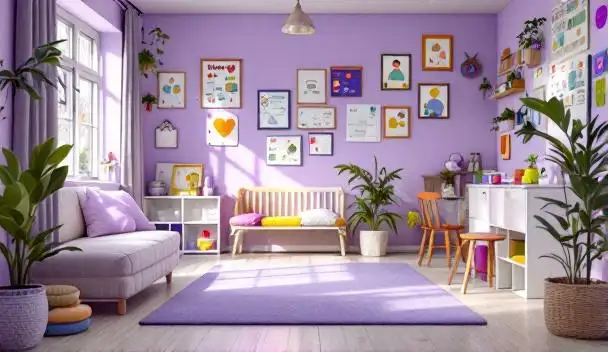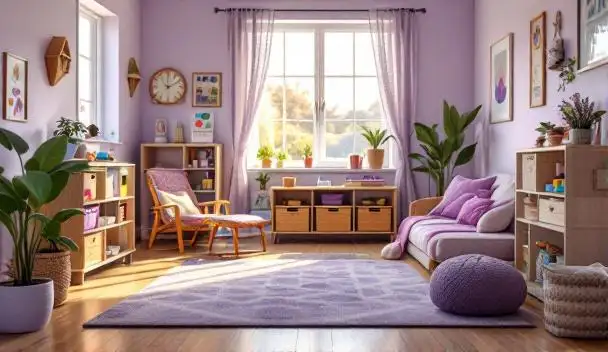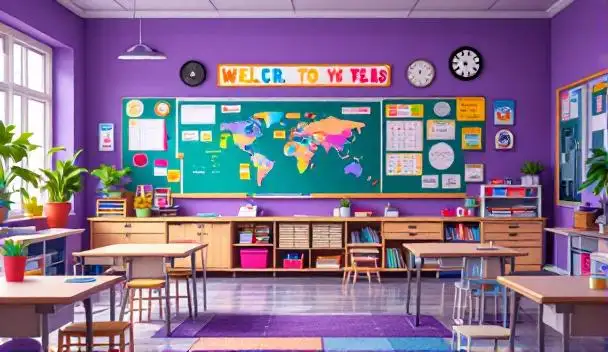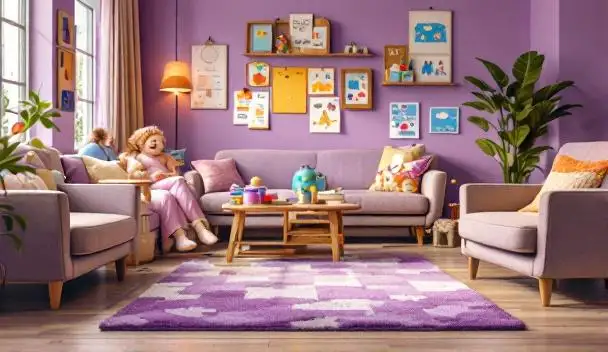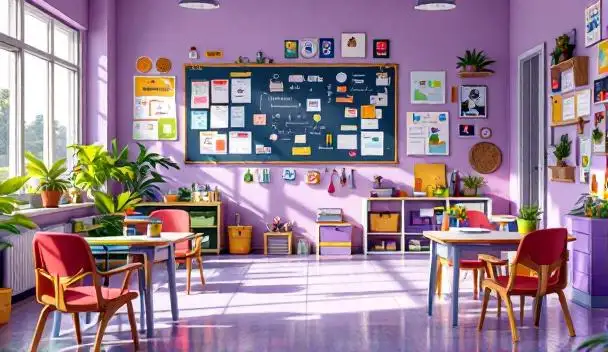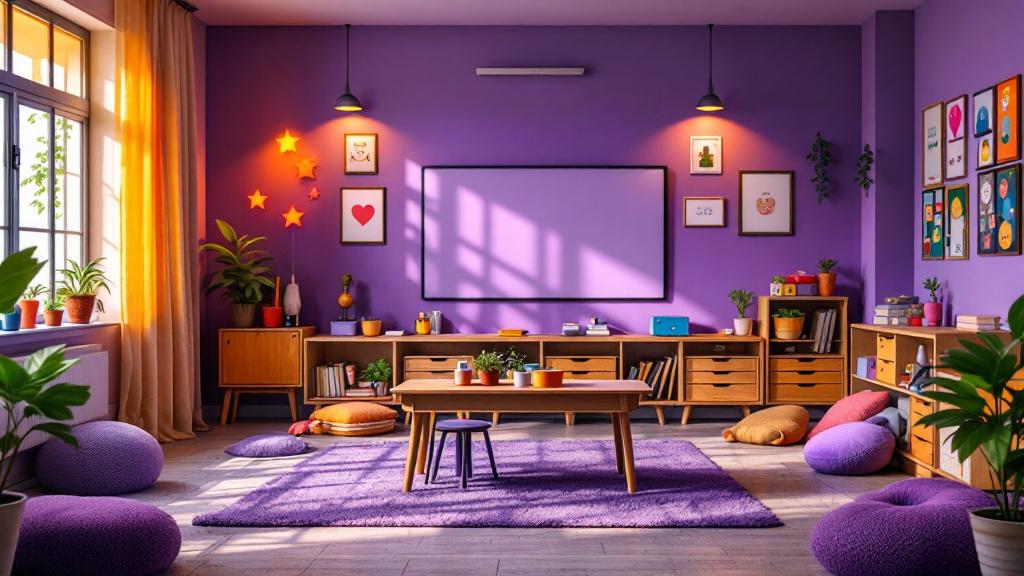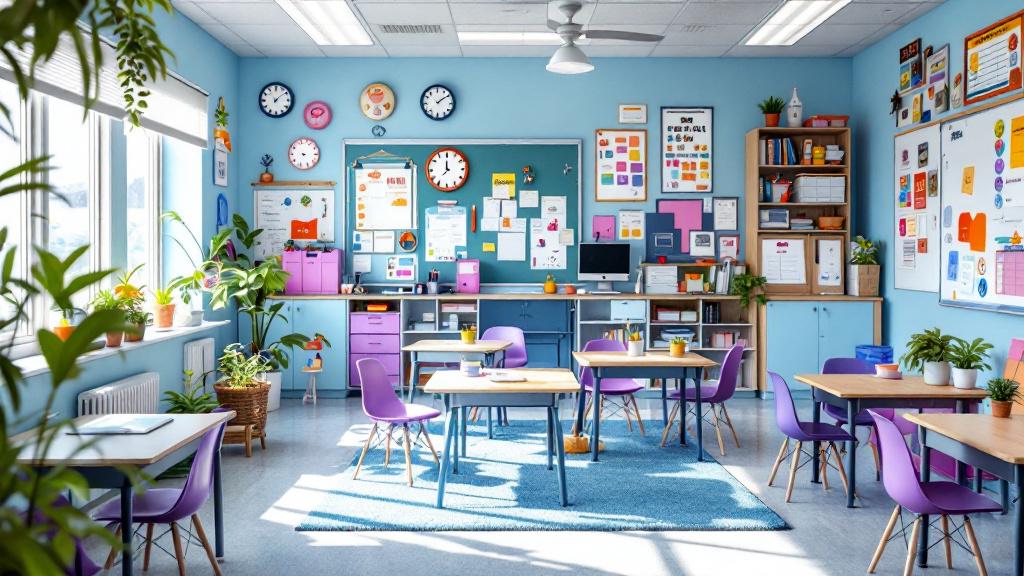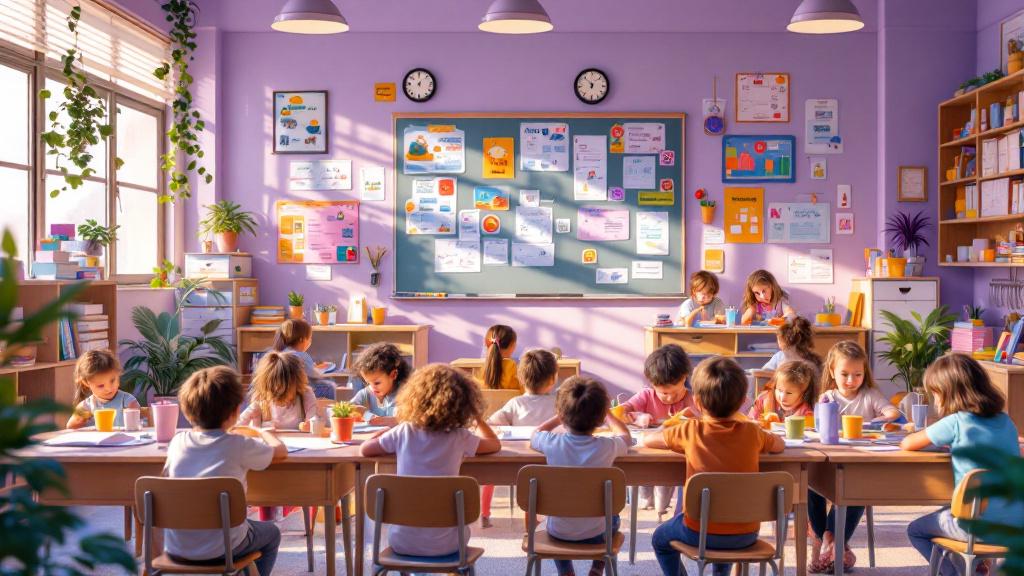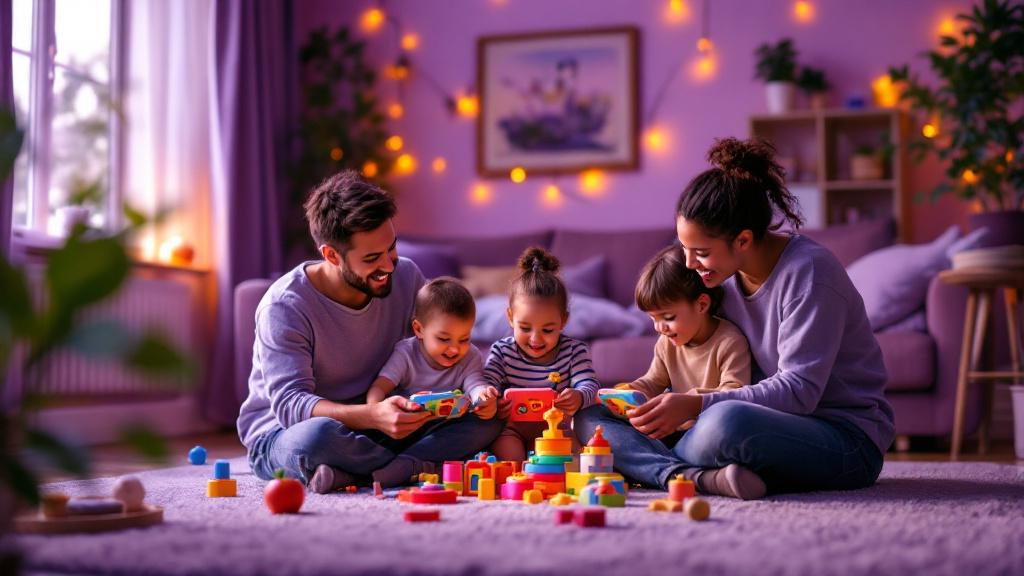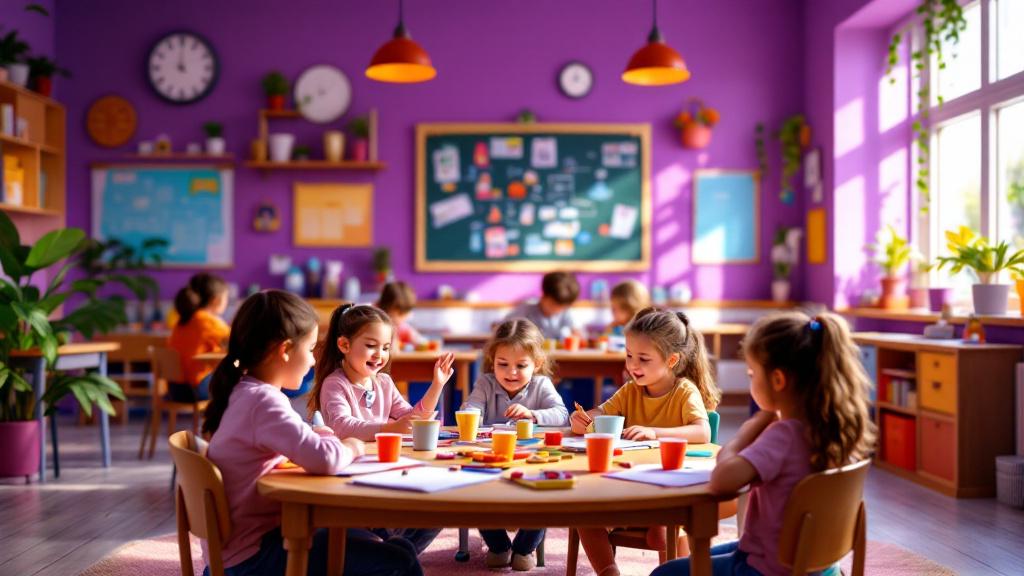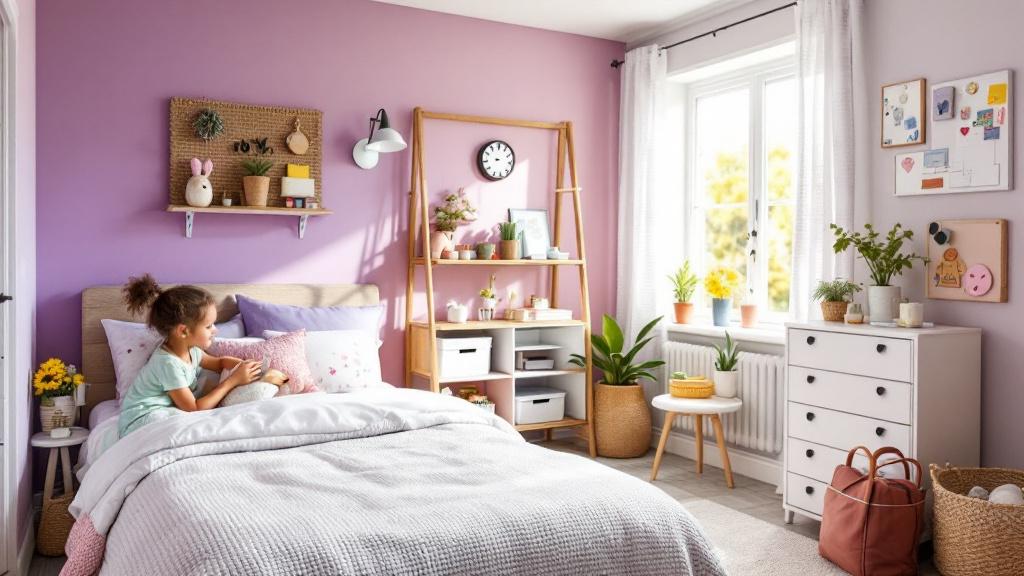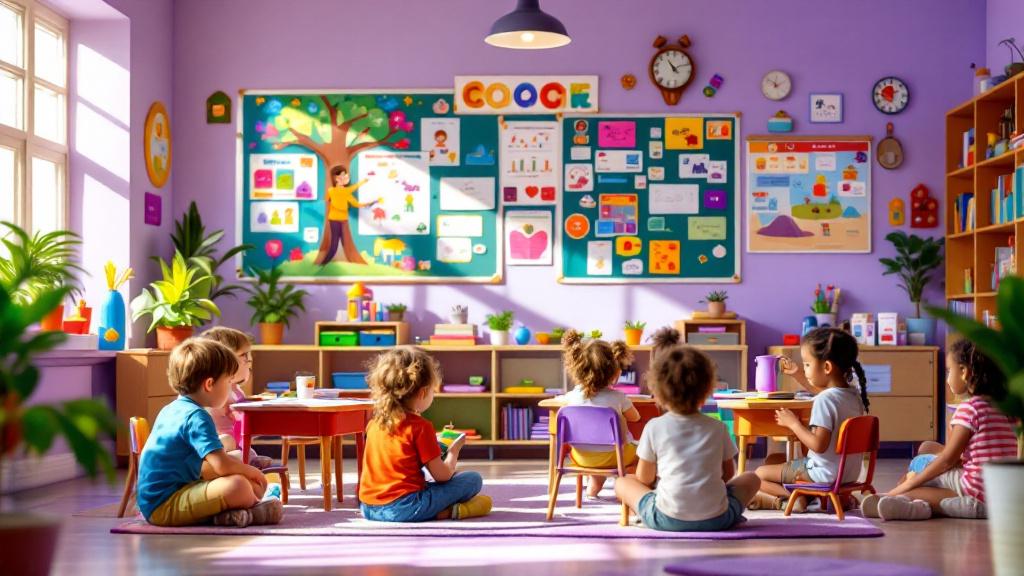Introduction to Making ABA Therapy Enjoyable and Effective
Applied Behavior Analysis (ABA) therapy is a cornerstone intervention for children with autism spectrum disorder. While its effectiveness is well-documented, maintaining children’s interest and enjoyment during sessions is crucial for promoting learning, social skills, and positive behavioral patterns. This article explores practical strategies and best practices to infuse fun into ABA therapy, ensuring that sessions are not only productive but also engaging and enjoyable for children of all ages.
Tailoring Activities to Child Interests and Developmental Levels
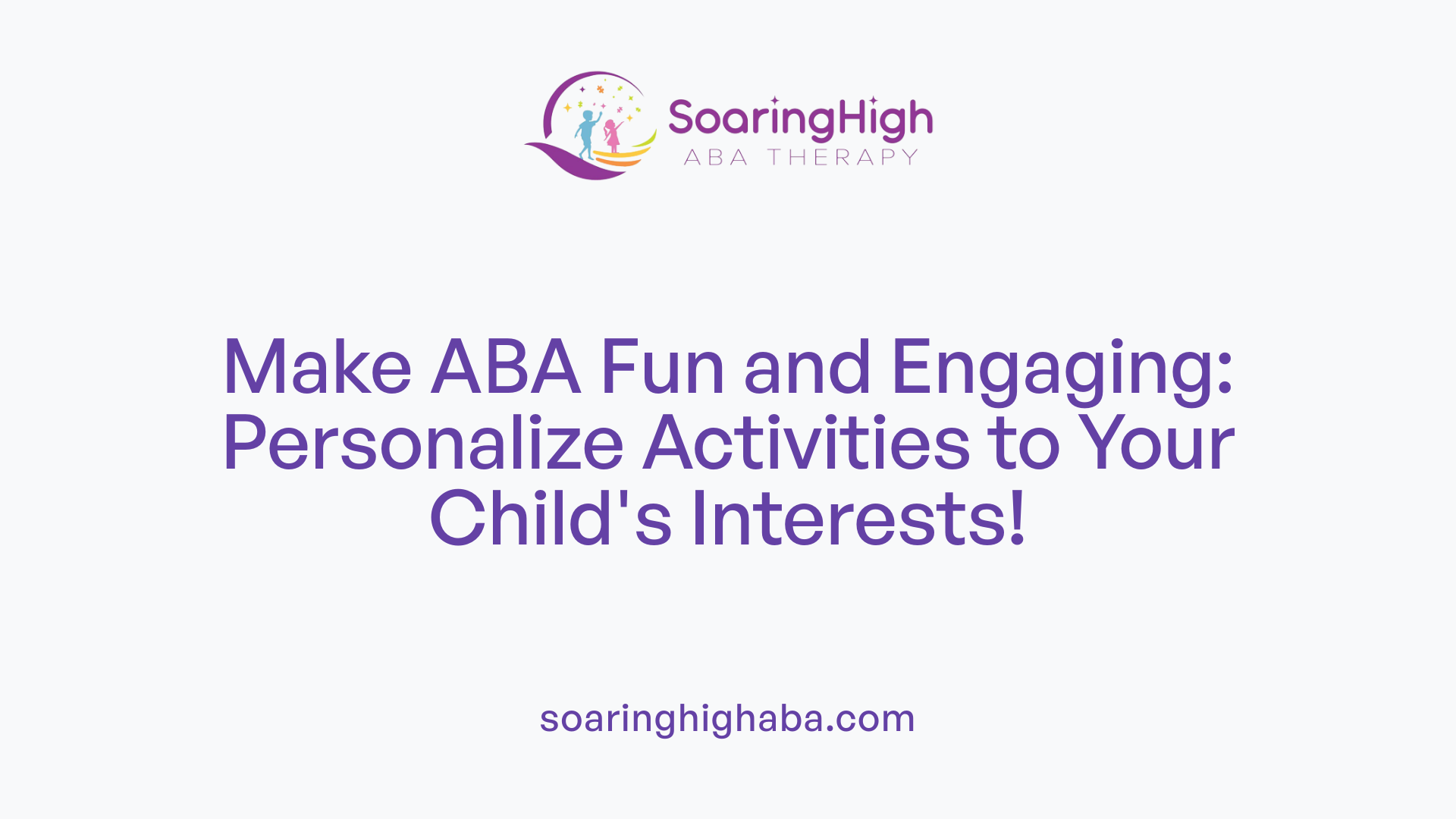
How can ABA therapy sessions be made fun and engaging for children?
Making ABA therapy enjoyable is a fundamental aspect of effective treatment. The first step involves incorporating the child’s interests into activities. For example, if a child loves animals or superheroes, integrating these themes into games or role-playing tasks can boost enthusiasm.
Age-appropriate play-based activities are essential. Young children benefit from simple, sensory-rich activities like puzzles, pretend play, or interactive games that promote exploration. School-aged children might enjoy structured tasks such as role-playing, sports, or board games that develop social and motor skills. Teenagers often respond well to activities that foster independence, such as household chores, cooking projects, or community outings.
Using visual aids and engaging materials is also crucial. Visual schedules, colorful flashcards, sensory toys, and educational apps help sustain attention and make learning more interactive. Movement-based activities, humor, surprises, and offering choices in reinforcement strategies make sessions lively and enjoyable.
Creating a positive environment supports motivation. A calm, organized space with comfortable seating, appropriate lighting, and sensory-friendly equipment helps children focus without feeling overwhelmed.
Involving family members ensures consistency and adds a layer of familiarity and comfort, making activities more relevant to the child's everyday life.
Continuous observation and adaptation are necessary. Watching how the child responds allows therapists to tweak activities, ensuring the experience remains engaging and effective.
Overall, blending personalized themes, age-appropriate activities, engaging materials, and a supportive environment creates therapy sessions that children look forward to, which enhances learning and development.
Additional details:
| Activity Type | Description | Benefits |
|---|---|---|
| Play-based activities | Incorporate pretend play, sensory activities, or themed games | Increases motivation and social skills |
| Visual aids | Use pictures, charts,and colorful materials | Enhances comprehension and attention |
| Movement and interactive tasks | Include dancing, role-playing, or physical games | Reduces boredom and promotes physical development |
| Reinforcement strategies | Choice of rewards, humor, or surprises | Boosts motivation and participation |
Tailored activities that align with a child's unique interests and developmental stage not only make therapy more enjoyable but also more effective in supporting their growth and learning.
Creating a Supportive and Structured Environment

What are best practices for creating a supportive and engaging environment in ABA therapy?
Developing an effective ABA setting involves multiple strategies aimed at making therapy both productive and enjoyable for children. Building a positive relationship based on trust and understanding is the foundation — when children feel safe and supported, they are more likely to participate actively.
Assessing each child's interests is vital to tailor activities that are meaningful and motivating. Using these interests as a basis for lessons helps keep children engaged and eager to learn.
Visual supports are powerful tools in creating an accessible environment. Schedules, visual timers, and social stories break down daily routines and complex tasks, making transitions smoother and reducing anxiety.
Ensuring the environment is organized and sensory-friendly also plays a critical role. Decluttering spaces, controlling lighting, and using noise reduction tools minimize sensory overload. Designating calm corners or quiet areas provides children a place to self-regulate if overwhelmed.
Structured routines and predictable sessions provide a sense of security. Consistent session phases — warm-up, main activities, and generalization — help children know what to expect, increasing their comfort and focus.
Effective reinforcement strategies should be aligned with what the child finds rewarding. Using preferred reinforcers immediately after desired behaviors encourages repetition.
Collaboration is essential. Working with parents, teachers, and other caregivers ensures that strategies are reinforced across all environments, promoting skill generalization.
Including peer interactions and teaching self-regulation skills add social dimensions and emotional regulation support, further enhancing engagement.
By combining these practices—visual supports, sensory-friendly spaces, predictable routines, and strong team collaboration—therapists can create an environment that is both supportive and engaging, ultimately boosting the child's learning and development during ABA therapy.
Strengthening Participation through Engaging Activities and Visual Supports

What are effective activities and methods to improve children's participation in ABA therapy?
Engagement is a cornerstone of successful ABA therapy. To foster active participation, it is crucial to incorporate activities that are both enjoyable and suited to the child's interests and developmental level. Play-based strategies are particularly effective, including interactive games, pretend play, sensory activities, and movement exercises. These methods not only make sessions more fun but also promote essential skills like communication, social interaction, and sensory regulation.
Using visual supports such as visual schedules and task analysis can significantly enhance understanding. These tools provide clear, predictable routines that help children know what to expect, reducing anxiety and increasing focus. For example, visual schedules lay out activities step-by-step, while task analysis breaks complex tasks into manageable parts.
Positive reinforcement plays a vital role in motivating children. Offering praise, rewards, and preferred items following successful engagement encourages children to participate actively and try new skills. This approach makes learning feel rewarding and helps establish positive behavioral patterns.
Involving family members in therapy maximizes the child's progress. Educating caregivers on strategies used during sessions enables them to reinforce skills at home. Creating a sensory-friendly environment—such as designated calm spaces, controlled lighting, and noise reduction—also supports sustained engagement, especially for children sensitive to sensory overload.
In sum, combining enjoyable, tailored activities, visual supports, positive reinforcement, and family collaboration creates a comprehensive approach that boosts children's participation and enhances their learning outcomes in ABA therapy.
Maintaining Interest and Motivation During Sessions
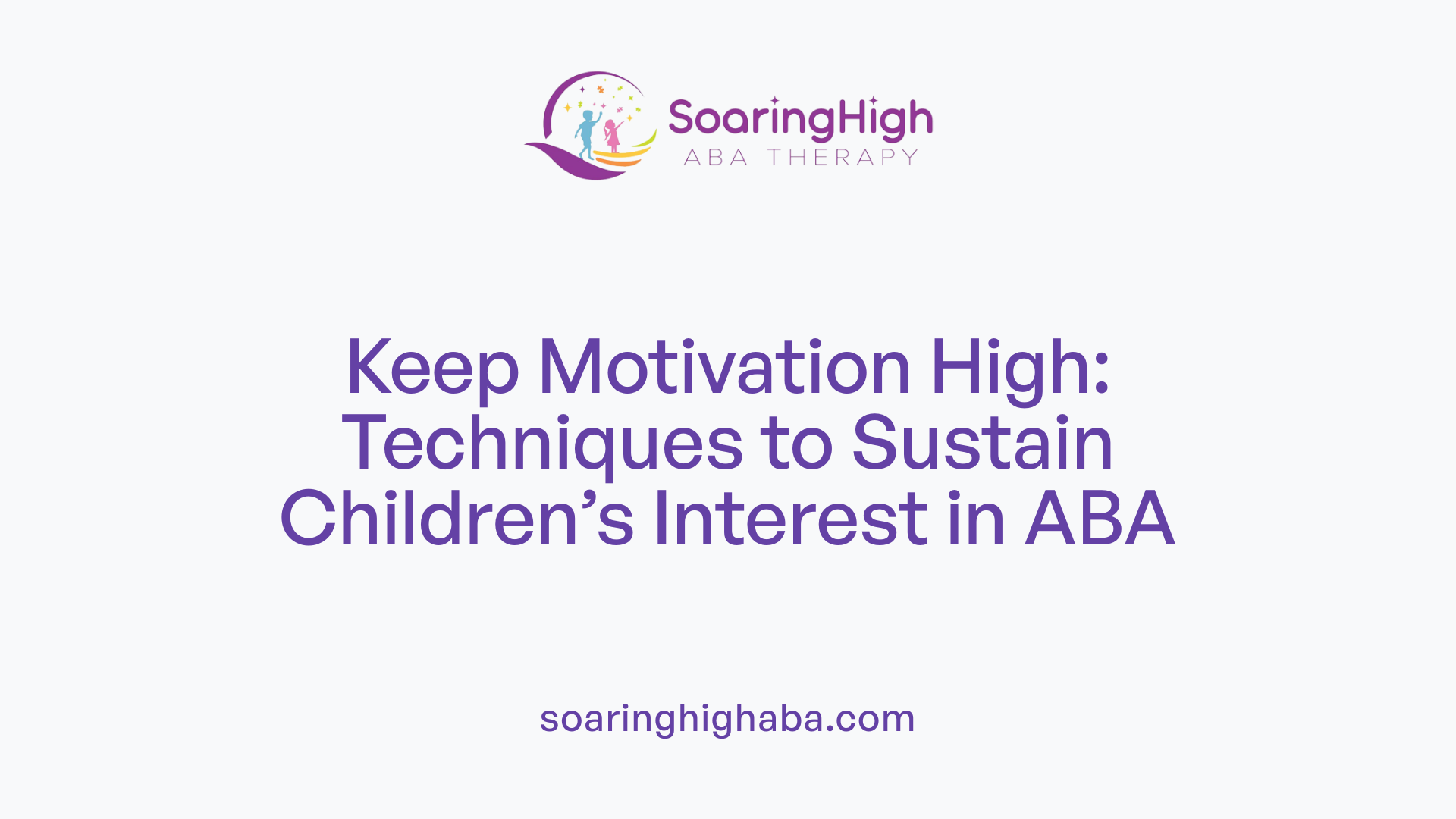
What techniques can help maintain children's interest and motivation throughout ABA sessions?
Keeping children engaged in ABA therapy requires a combination of personalized activities, preferred reinforcers, and supportive tools.
A fundamental strategy is tailoring activities to match each child's unique interests. Incorporating their favorite toys, themes, or hobbies makes learning more relevant and fun, fostering a stronger connection with the material.
Using preferred reinforcers such as favorite snacks, toys, or tokens helps motivate children to participate actively. These rewards are often stored in a treasure box or earned through successful completion of tasks, adding an element of excitement.
Engaging tools like puzzles, interactive games, music, and storytelling can transform routine sessions into lively and enjoyable experiences. These methods reduce resistance, increase focus, and promote positive feelings during learning.
Providing choices is another effective approach. Allowing children to select activities or materials fosters independence and a sense of control. Visual supports like timers, the First-Then board, or social stories help set clear expectations for what will happen next, reducing anxiety and confusion.
Creating an environment that is sensory-friendly and calm minimizes distractions and sensory overload, supporting sustained focus.
Parents and caregivers can further boost motivation by collaborating with professionals and fostering a respectful, curious attitude towards the child's preferences.
Incorporating these techniques into the structure of ABA sessions—through varied, personalized activities and supportive tools—can significantly improve engagement, resulting in more effective learning and positive behavioral outcomes.
| Technique | Examples | Purpose |
|---|---|---|
| Personalization | Favorite activities, themes, toys | Increases relevance and engagement |
| Preferred Reinforcers | Snacks, toys, tokens | Motivates participation |
| Engaging Tools | Puzzles, games, music, storytelling | Maintains interest, fun atmosphere |
| Providing Choices | Activity selection, visual supports | Enhances independence and reduces anxiety |
| Clear Expectations | Timers, social stories | Clarifies session flow, reduces stress |
By integrating these techniques, ABA therapy becomes more than just structured learning; it becomes a process that children look forward to, promoting active involvement and better progress.
Incorporating Fun and Play in ABA for Better Outcomes
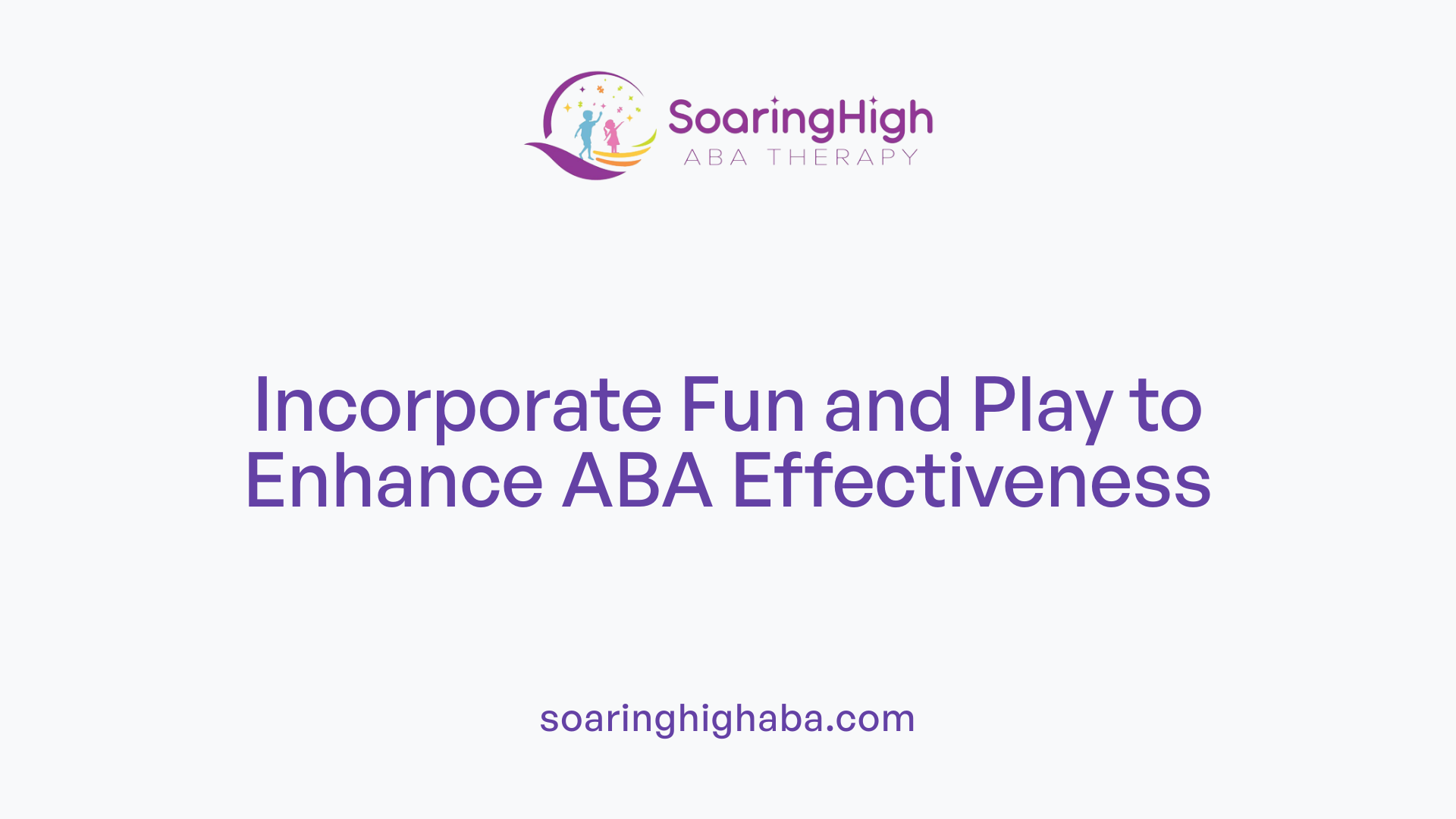
How can fun elements be incorporated into ABA therapy to improve its effectiveness and the child’s experience?
Adding fun and engaging activities into ABA sessions can dramatically boost a child's motivation and participation. Tailoring activities to the child's specific interests makes therapy feel more like play than work, fostering a positive attitude towards learning.
Play-based learning and sensory activities are powerful tools for making sessions enjoyable. For example, using colorful visual aids, interactive games, and sensory-rich experiences such as textured materials or calming lights helps capture the child's attention. Incorporating rewards like stickers, tokens, or praise can reinforce positive behaviors and sustain engagement.
Organizing a therapy space with designated areas for different activities and visual schedules ensures predictability, which reduces anxiety and builds trust. A consistent environment helps children feel secure and ready to learn.
Families can play a vital role by participating in therapy activities or practicing skills at home. This consistency supports the child's progress and makes the learning process seamless.
Fun indoor activities such as arts and crafts, cooking exercises, or imaginative games can be integrated within ABA principles. These activities make sessions more enjoyable, encouraging children to participate actively.
By creating a supportive, enjoyable atmosphere, therapists can improve the effectiveness of ABA. Engaged children are more likely to retain skills, develop social interactions, and enjoy the learning process overall.
Using Desensitization and Sensory Strategies to Support Engagement
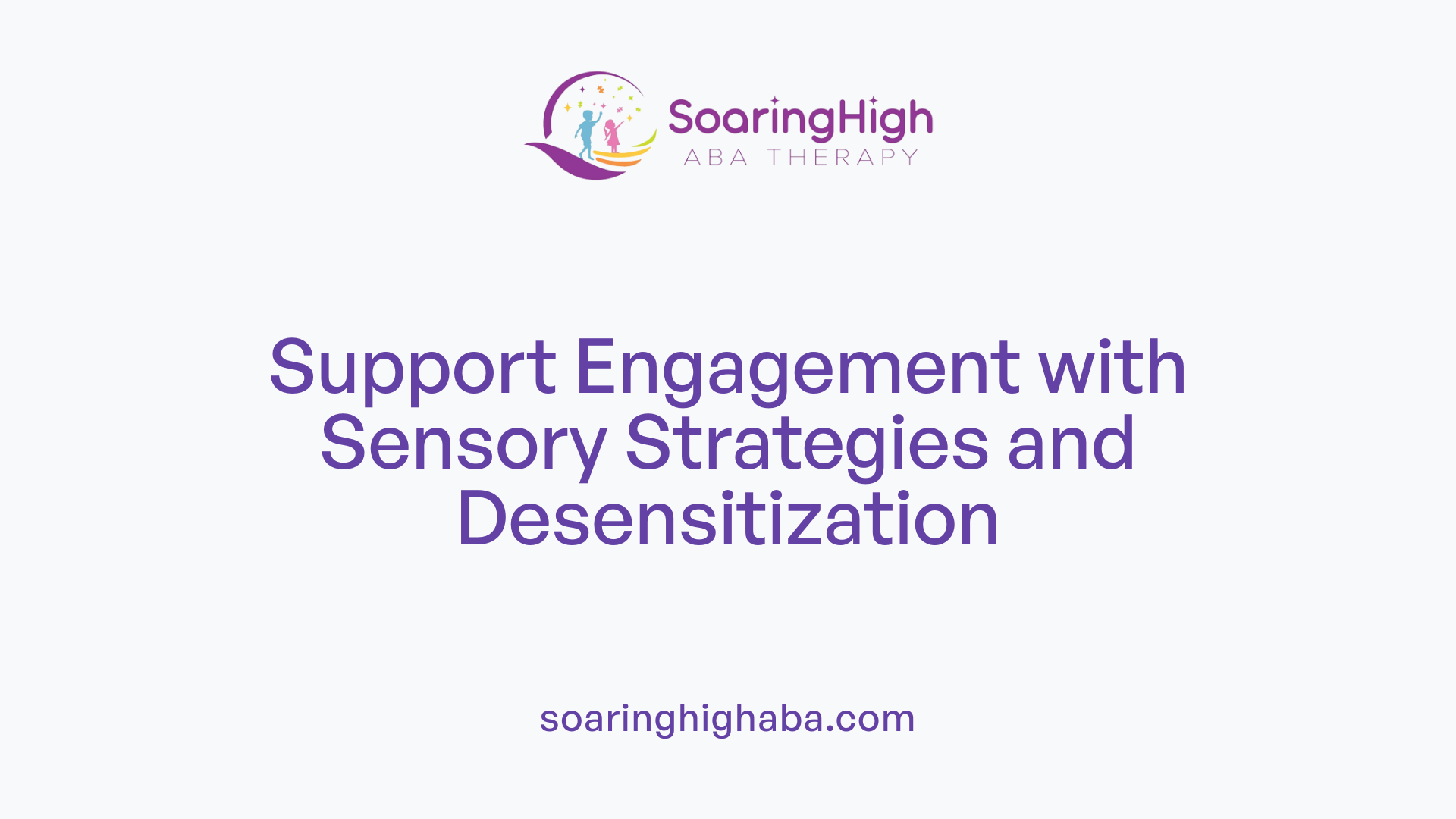
How can fun elements be incorporated into ABA therapy to improve its effectiveness and the child’s experience?
Making ABA therapy sessions engaging and enjoyable is essential for fostering motivation and active participation. One way to do this is by tailored integration of playful activities that resonate with each child's interests. For example, using visual aids, interactive games, and sensory-rich experiences can capture attention and foster learning.
Reward systems such as tokens, stickers, or praise can encourage positive behaviors while making the process fun. Structured routines, visual schedules, and dedicated spaces for different activities help create a predictable environment, which can reduce anxiety and make children more receptive to learning.
Involving family members and suggesting home activities reinforces skills learned during sessions. Incorporating arts and crafts, cooking, or movement-based games into ABA strategies turns learning into an enjoyable experience. These approaches help children stay motivated, increase their engagement, and achieve better outcomes from therapy.
How can gradual exposure to sensory stimuli support engagement?
Gradual exposure, or desensitization, involves introducing children to sensory stimuli they find overwhelming in small, manageable steps. This method helps build tolerance over time.
Therapists start by presenting the sensory input at a low level, paired with positive reinforcement when the child remains calm. They slowly increase the intensity or duration as the child becomes more comfortable.
This step-by-step process reduces sensory-related stress and anxiety, making children more open to participating in other activities.
What are sensory diets and how do they help?
Sensory diets are personalized routines designed by therapists to meet a child's sensory needs. These routines include activities such as heavy work (e.g., pushing, pulling), calming sensory input (e.g., swinging, deep pressure), and scheduled sensory breaks.
Implementing sensory diets helps children regulate their sensory responses, enabling better focus and reduced meltdowns. Consistent use of these strategies supports engagement by creating a calming and organized environment.
How can sensory-friendly environments be created?
Designing sensory-friendly spaces involves minimizing distractions and sensory overload. This can include reducing clutter, controlling lighting to prevent visual overstimulation, and using noise-reducing tools like headphones or sound machines.
Providing calm corners or quiet zones within therapy rooms offers children a safe space to self-regulate when overwhelmed. Incorporating soft colors, comfortable seating, and sensory tools like fidget toys or stress balls further enhances the environment.
Creating such spaces supports children in managing their sensory sensitivities, encouraging more consistent participation in ABA activities.
| Strategy | Description | Benefit | Example Activities |
|---|---|---|---|
| Gradual exposure | Slowly introducing sensory stimuli | Builds tolerance | Exposure to different textures gradually |
| Sensory diets | Personalized sensory routines | Regulates sensory responses | Heavy work activities, calming sensory input |
| Sensory-friendly environment | Spaces designed to reduce overload | Decreases stress and overstimulation | Quiet corners, adjustable lighting, noise control |
Understanding and implementing these sensory strategies can significantly enhance engagement in ABA therapy, helping children develop vital skills in a supportive setting.
Monitoring Progress and Adjusting Strategies for Success
How does data collection and analysis support effective ABA therapy?
Data collection is essential for tracking a child's progress and evaluating the effectiveness of different strategies. Therapists record behaviors, skill acquisition, tolerance levels, and response to interventions regularly. This systematic approach helps identify patterns, measure improvements, and determine which activities are most engaging and effective.
By analyzing this data, therapists can pinpoint areas where the child may need more support or where an adjustment can boost motivation. Consistent monitoring allows for timely modifications, ensuring that therapy remains tailored to the child's evolving needs. For example, if a child shows decreased engagement, the therapist might incorporate more play-based activities aligned with the child’s interests.
How can activities be adjusted based on responsiveness?
Adjusting activities based on a child’s responsiveness involves observing their reactions and participation levels during sessions. If a particular activity fails to maintain interest, it can be modified by adding elements the child enjoys, such as favorite songs or toys. Using preferred reinforcers—like stickers, tokens, or favorite objects—helps motivate ongoing participation.
Implementing movement breaks or sensory activities can re-engage children who show signs of boredom or overstimulation. Additionally, gradually increasing the complexity or changing the format of tasks, such as transitioning from structured work to more natural, play-based scenarios, can sustain the child’s interest.
Why is collaborative planning with families and therapists important?
Collaborative planning ensures consistency and generalization of skills across environments. Parents, caregivers, and therapists work together to set realistic goals, select engaging activities, and adapt routines to fit the child's changing preferences.
Regular communication helps share insights about what activities resonate most with the child, allowing for ongoing adjustments. Family involvement in therapy planning also fosters a supportive environment at home, reinforcing learned skills and promoting positive behavioral patterns.
How to make ABA sessions engaging and motivational?
Strategies to maintain interest include integrating the child's favorite activities, like puzzles or pretend play, into sessions. Using preferred reinforcers such as toys or positive praise keeps motivation high.
Creative approaches like colorful visual supports, storytelling, and interactive games make therapy sessions more dynamic. Offering choices during activities, setting clear expectations with timers, and involving children in selecting activities foster a sense of control and investment.
A sensory-friendly environment, with calming spaces and familiar items, reduces overstimulation. Combining these elements with continuous data collection and responsiveness to the child's cues results in a more effective and enjoyable ABA experience.
Conclusion: Creating Fun and Effective ABA Sessions
Infusing ABA therapy with engaging, playful elements rooted in each child's interests and needs can significantly boost motivation, participation, and overall learning outcomes. By combining tailored activities, a structured yet flexible environment, visual supports, and family collaboration, therapists can create sessions that are not only effective but also enjoyable. Continuous monitoring and adapting strategies ensure that the therapy remains relevant and responsive to the child's evolving needs, turning ABA sessions into positive, enriching experiences that foster growth, independence, and joy.
References
- A Guide to Creating Engaging ABA Activities for Children
- The Role of Play in ABA Therapy: Making Therapy Fun
- Three Ways to Make ABA Unique for Your Child
- How to Run an ABA Session Effectively for Success
- Making ABA Therapy Fun: Incorporating Play and Activities
- A Guide to Creating Engaging ABA Activities for Children
- The Ultimate Guide to Creating Fun ABA Therapy Sessions















